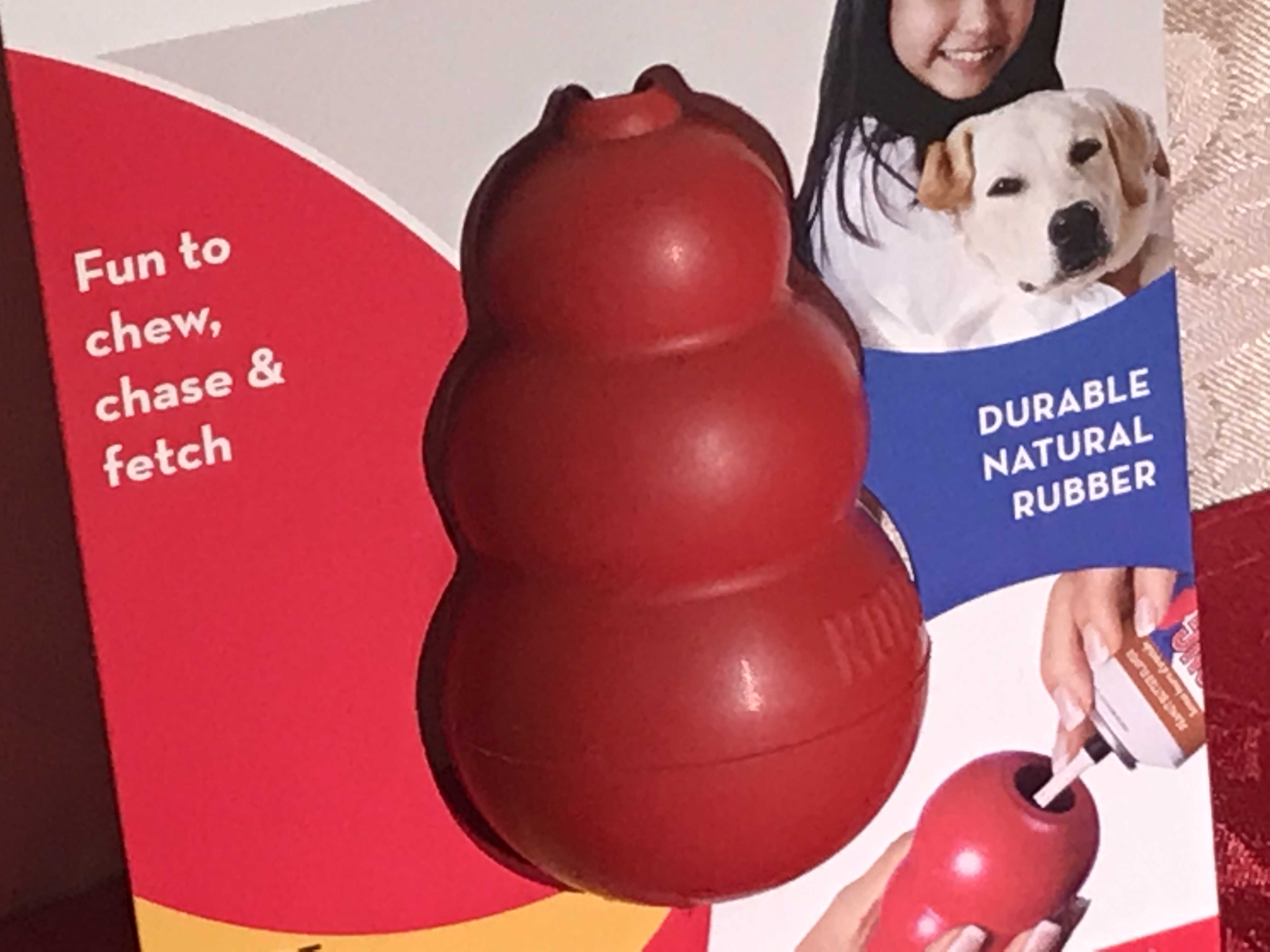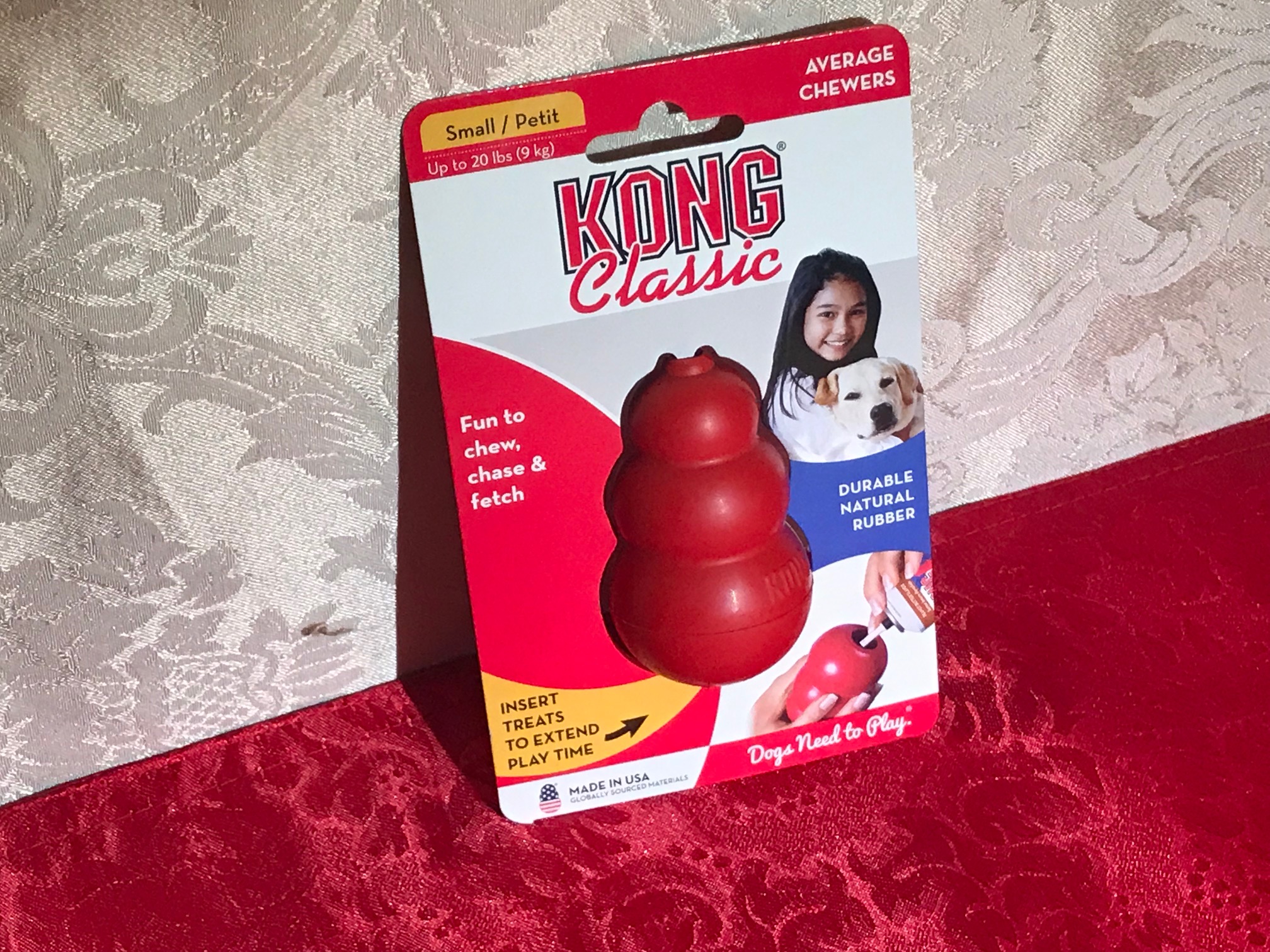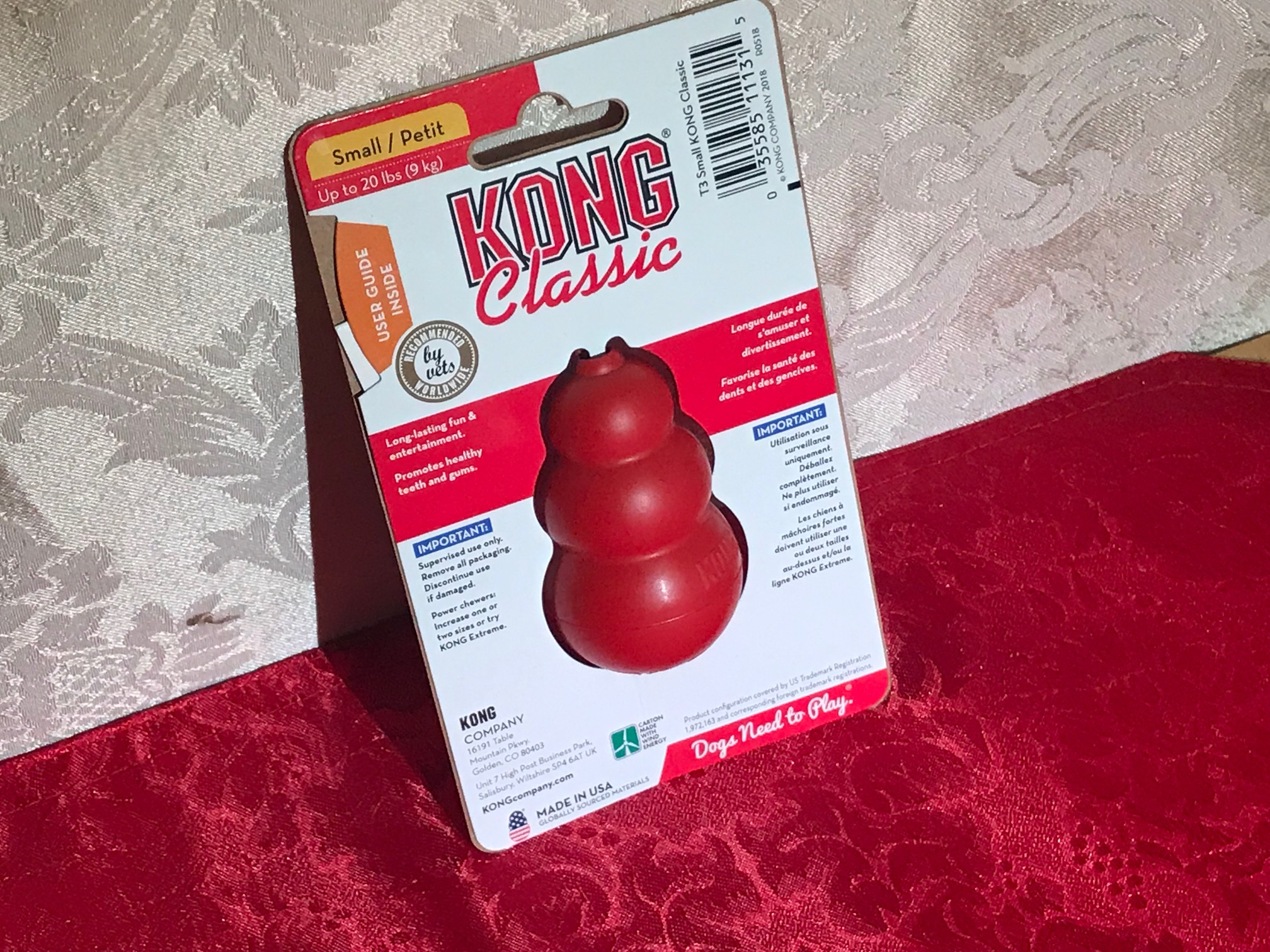Kong Classic Natural Durable Rubber dog chew toy: 18 ppm Cadmium – a carcinogen. This level is safe by all standards*

When tested with an XRF instrument, this new (in package) Kong Classic “Natural Durable Rubber” dog chew toy had the following readings:
180-Second Reading #2:
- Cadmium (Cd): 18 +/- 5 ppm
- Barium (Ba): 5,662 +/- 130 ppm
- Zinc (Zn): 32,400 +/- 500 ppm
- Iron (Fe): 832 +/- 86 ppm
- Vanadium (V): 3,618 +/- 110 ppm
- Titanium (Ti): 7330 +/- 204 ppm
- Indium (In): 20 +/- 7 ppm
- Platinum (Pt): 406 +/- 71 ppm
- Negative / Non-Detect for: Lead, Mercury, Arsenic, Antimony, Chromium, Selenium
180-Second Reading #2:
- Cadmium (Cd): 10 +/- 5 ppm
- Barium (Ba): 5,688 +/- 131 ppm
- Zinc (Zn): 30.700 +/- 500 ppm
- Iron (Fe): 751 +/- 85 ppm
- Vanadium (V): 3,456 +/- 106 ppm
- Titanium (Ti): 6,917 +/- 195 ppm
- Platinum (Pt): 281 +/- 68 ppm
- Negative / Non-Detect for: Lead, Mercury, Arsenic, Antimony, Chromium, Selenium
*While there was no Lead found, multiple repeated 3-minute tests (using a freshly calibrated XRF instrument testing in “consumer goods” mode) consistently confirmed the presence of trace levels of Cadmium in the 5 to 23 ppm range. The strictest standard limiting the presence of XRF-detectable Cadmium is the standard held by the State of Washington, which limits Cadmium content in children’s items to 40 ppm [FYI: – and (unlike the Federal Lead standard) includes dishes as being an item “intended for use by children”!] So while this product does have Cadmium [likely a contaminant of whatever is used for the red colorant of this chew toy], it is at levels that are not considered concerning to anyone for a consumer good…
…BUT – and this is a big BUT…
… I should like to request for your consideration that – given the amount of action/abuse this sort of toy might see in the mouth of a dog (an animal that generally has pretty sharp teeth!) – the amount of Cadmium in a toy like this should be regulated to FOOD toxicity limits, NOT to consumer goods toxicity limits.
Heavy metals in foods are generally considered toxic (unsafe/ illegal/ likely to cause harm) at levels in the 1 to 100 parts per billion level. With Cadmium levels of this toy coming in as high as possibly 23 parts per million, this is a problem because 23 ppm translates to 23,000 ppb [vs. something in the range of 1 to 100].
Accordingly – given the high likelihood of potential ingestion of some or all of the “Natural Durable Rubber” of this toy, I would not choose to use this for my dog [if I had a dog – which I do not currently. I have four cats and a bunny!]
As always, please let me know if you have any questions.
Thank you for reading and for sharing my work!
Tamara Rubin
#LeadSafeMama
Never Miss an Important Article Again!
Join our Email List





We have one but my dog doesn’t like it. Maybe she knows something we didn’t.
Thank you for commenting!
– Tamara
Thank you so much, Tamara for doing the test and for sharing the results! I have been wondering so many years about the Classic Kong toy. And of course the company that produce the Kong toys says that they are non toxic and safe since they are made of 100% natural rubber. But some weeks ago I was wondering about the red colour, what is used to make the toys red? But since they are considered safe, I continued to stuff the Kong toys with peanut butter and also other mashed food to freeze them and give them to my dog when I leave for work. But some weeks ago when I cleaned the two Kong toys the cloth I wiped the inside of the toys with got red stains from the inside of the red Kong! And when I now read your article that it is Cadmium that makes them red, I will throw them in the garbage! I’m so sorry because my dog loves his Kong toys, but I am more sorry that I gave him these toys to begin with; he licks and chews them, and of course he then will ingest Cadmium. I used to paint with watercolours, but when I learned some years ago that Cadmium is so toxic and harmful for humans, animals and aquatic life, I found other non toxic alternatives to Cadmium red watercolour. I didn’t know at all that is was the very same toxic Cadmium that is in my dog’s favourite chewing/treat toy! I am so grateful that you shared this, thank you so very much! (I apologise for my lengthy comment.)
That is if the animal ATE THE TOY. Extreme sensationalism. DOGS DON’T EAT THESE THINGS It is almost impossible to tear them up. Let’s spend our time and efforts on some REAL LIFE PROBLEMS NOT SOME POSSIBLE MAYBE COULD HAPPEN scenarios.
Hi Ron,
No sensationalism at all. Most people don’t read past the headline and the headline clearly says that this level is safe by all standards.
Cadmium is incredibly toxic and dogs are relatively small (compared to humans) and they do chew on the toy when it is used as intended, so – at 23,000 ppb Cadmium – I stand by concern for ingestion (even in trace amounts.)
Tamara
With my precious dogs, even a maybe or a possibly is a no. Thank you so much, Tamara for letting us know about this!
Are there any safe dog toys?
my dog is not an extreme chewer, we own one and have now thrown it out because it did start to degrade. it is a few years old, and we would freeze peanut butter in it and after a time it definitely started to crack and fray. definitely not ok if there’s this cadium in it! sorry pup!
Hi , thanks for quality information as always. I have a few “KONG” brand toys for my pup, including one like pictured, a long version and a frisbee. They are all black, not red. DO you think this is just an issue with the red coloured ones?
I think the black colorants may have similar concerns – but I have not yet tested examples. Unfortunately Cadmium is not well regulated and dog toys are also not well regulated.
T
Hi Tamara! Is natural terracotta safe for licking? I’m not fond of Kongs. Eating, drinking and cooking in natural terracotta is traditional in my culture so I was wondering if this could be a safe alternative.
What is a safe alternative for Kong? My dog loves it and it is a good mental workout for him trying to get the food out. Thank you so much!!